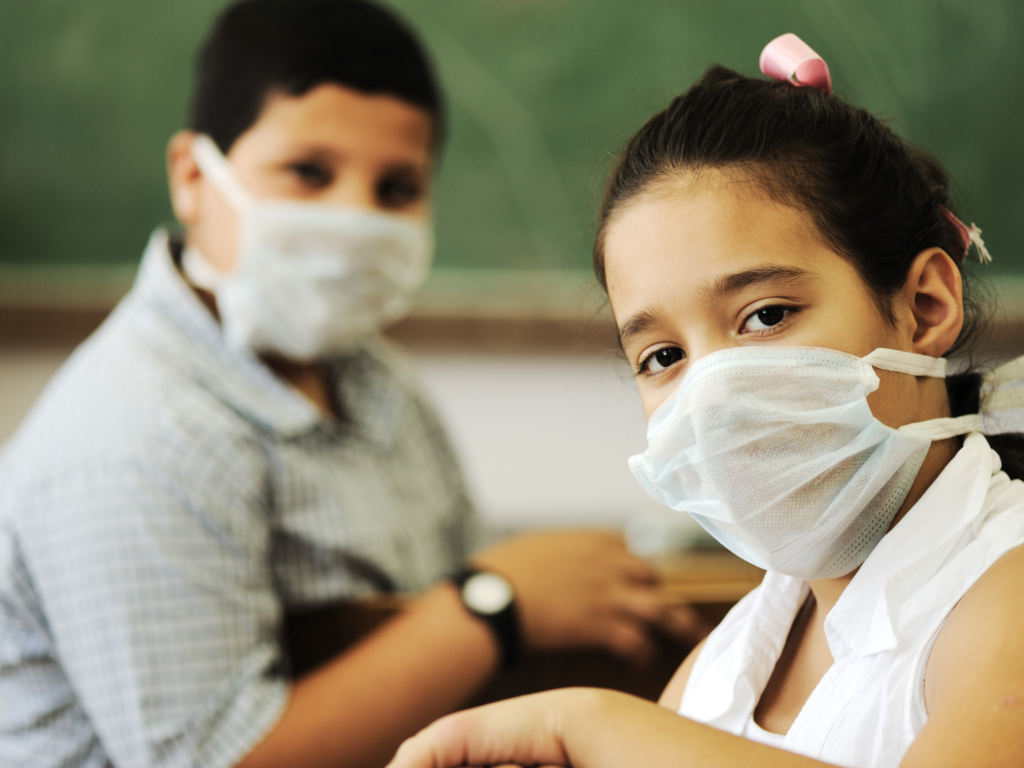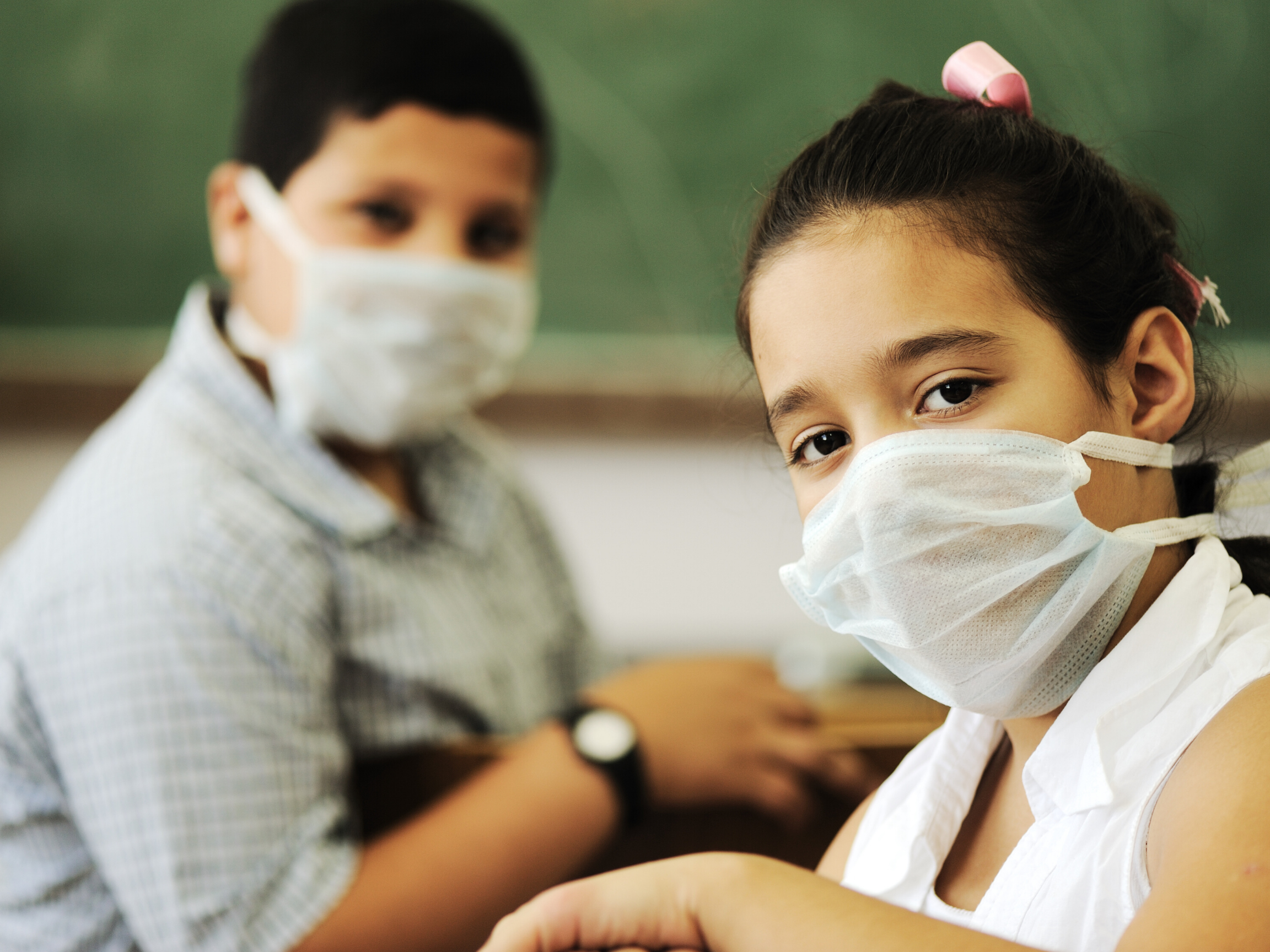
The strange school year of 2019–2020, overshadowed by COVID-19, is coming to an end, but families still don’t know what to expect when it’s time for 2020 back to school season in the fall. How do we spend summer break living with the uncertainty of not knowing what school will be like in the fall? As a parent and a leader in the San Antonio Charter Moms discussion group, I am navigating this uncharted territory for my own children and guiding other families how to have a positive mindset. We are also running a survey to learn what parents are thinking about back to school. While we aren’t likely to find clarity any time soon, we can narrow down the range of possibilities to a set of contingency plans. Also, we can treat each other with kindness and respect each others’ choices.
2020 Back to School Contingency Plans
What do we know about back to school in 2020–2021? As of this writing, in May 2020, there is not much we can pin down. The news keeps coming faster than we can share it in the Facebook group, although we keep pretty well on Twitter at @sachartermoms. From these news reports, and my conversations with school leaders, some themes are emerging. As parents, these contingency plans help us focus on a limited number of scenarios so we can prepare ourselves for those.
Contingency 1: Campuses Will Open
If trends continue, and the number of illnesses declines even as businesses reopen, then it seems likely that campus buildings will open in the fall for in-person classes. Some students may be on campus even sooner for some students: the governor has approved in-person summer school starting as early as June 1, although local school leaders are still deciding how to reopen.
When campuses reopen, what will school be like? The administrators I have spoken with are still in the process of developing their guidelines and manuals for reopening. Depending on the district or school, it may be a month or more before they are ready to share those plans with parents and the community. In the meantime, a lot of rumors are circulating on social media. These days, it’s especially important to be media savvy, and teach our kids to have digital literacy skills, too. Memes and infographics may distort the truth. If in doubt, go to a reputable source, like the Texas Education Agency (TEA) or the Centers for Disease Control.
Contingency 2: Distance Learning Continues
Some students, faculty, and staff—because of their age or medical conditions—just can’t risk going back to campus until there is a vaccine or effective treatment for COVID-19. These students still need an education, so schools will need to provide remote education options for them.
A larger group of families may just feel unsafe sending their kids back to school in the fall. Perhaps the household includes a family member, like a grandparent, who is at high risk. Or, maybe the family is concerned about rare but serious conditions that occur in some children with COVID-19.
While remotely delivering special education services and evaluations can be a challenge, some students may actually be happier learning from home rather than on campus, and may opt for distance learning or virtual school.
Contingency 3: The Hammer Falls Again
This fall, any of a number of factors, such as businesses reopening, less social distancing, or cooler weather, could cause the number of coronavirus cases to rise. Then communities may need to impose restrictions again, including temporary school closures. This could be on a small scale. For example, if a student is diagnosed with COVID-19, her immediate classmates might be quarantined, but the school could continue to operate. However, if the spread is community-wide, the campus closures could be on a larger scale.
The TEA has already proposed that school districts adopt intersessional calendars that, like year-round school, include longer breaks in the fall, winter, and spring. (Locally, Castle Hills Elementary and Lamar Elementary have calendars like this.) The longer breaks could act as cooldowns to slow the spread of SARS-CoV-2. Local school boards determine their own school calendars, and so far none have changed their 2020–2021 calendars to account for COVID-19.
Looking at the possibilities for back to school in terms of these contingency plans helps me focus my thinking. It’s too early to say which one is the most likely; we may experience all three scenarios at different times. When I filled out the parent survey about our fall plans, I answered with my best guesses. As parents, how can we stay positive while holding all these potentialities in our minds?
Thinking About Sending Our Kids Back to School in Fall of 2020
Do I pre-order the boxes of school supplies to be shipped to my kids’ schools in August? When school uniforms go on sale for Memorial Day weekend, do I stock up for the next growth spurt? Usually the answer is yes, but this year I am going to wait and see. I downloaded the school supply lists, and I have most of the materials on hand. Later on, I can either build my own supply box or we can use them for distance learning or homeschooling. They’ll try on the school clothes in their closets and we’ll see what they’ve outgrown—probably everything—but we will wait to order more. Waiting makes me uneasy, but I want to be prudent with our family’s resources.
School supplies and uniforms are small distractions compared to the bigger issues around sending kids back to school while SARS-CoV-2 is still spreading in the community. Will staff or students wear face shields or masks? Will schools open more entrances, stagger start times, and check temperatures? Which days of the week or hours of the day would my children be on campus?
I could spend all my time dwelling on these possibilities, but that would be bad for my mental health. I have to accept that there is not much I can do about it right now. How can I channel my energy in constructive ways? I am following the news closely, but also taking breaks. I am watching my inbox for announcements from my kids’ school that might add details to the contingency plans. As the situation develops, I’m preparing to advocate for the type of education that my children need. Our parent survey about back to school plans invites you to let us know that you want to team up to advocate for a safe return to school.
Showing Kindness and Tolerance While Living With Uncertainty
Overall, our family has had a comfortable transition to remote education. We are privileged to have fast internet access, plenty of computers and tablets, and the skills to move our work and school online. I have homeschooled before, and while it’s not the same as what we’re doing now, the experience is relevant. As we plan for summer, we are searching and evaluating materials and building schedules and habits for learning at home. That makes it easier for us to live with the uncertainty of multiple contingency plans for the fall. However, I am aware of the struggles that other families face, whether it’s because they are cut off from the digital world, or the children need services that can’t be provided virtually. There are parents who want to put on a pair of heels and get back to the office, and kids who want to play ball with their friends again.
Those frustrations sometimes spill over into online battles among the parents who want to stay safe at home and the parents who want things to reopen soon. Many parents are concerned about health risks of sending children back to school. They are also concerned about how new safety guidelines, like what’s happening at reopened schools in Europe, will affect their children. Other families say they are eager to have their children socializing again and experiencing the structure of school. These are all legitimate concerns. For my family, I don’t have enough information yet, but there’s a good chance our fall contingency plans will include distance learning.
My attitude is, “I’ll do me, and you do you.” In the San Antonio Charter Moms discussion group, our team strives to model tolerance and respect in how we post and comment. We want that group to be a safe place for parents, where they can think out loud about the choices they want to make for their children, without judgment or criticism. We will keep parents informed about what’s happening at schools, and then trust them to make the right decisions for their children. Also, we will continue to use tools like our parent survey to listen to parents’ concerns and help them advocate for a safe return to school in the fall.
Read More About 2020 Back to School
- “‘This Has Really Been a Blessing’: For Many Special Needs Students, Learning From Home During Pandemic Has Sparked Surprising Breakthroughs,” Jo Napolitano, 74 Million, May 20, 2020
- “Learn Everywhere: Our Roadmap for Summer At-Home Learning,” Inga Cotton, San Antonio Charter Moms, May 19, 2020
- “Texas schools can hold summer classes, but students can’t be required to attend in person,” Aliyya Swaby, Texas Tribune, May 18, 2020
- ”Texas to allow in-person summer school June 1; San Antonio school districts eye July start,” Krista Torralva and Alia Malik, San Antonio Express-News, May 18, 2020
- “San Antonio parents urged to register students for upcoming school year,” Alia Malik, San Antonio Express-News, May 15, 2020
- “Europe’s schools face new test: Teaching safely in a pandemic,” Lenora Chu, Colette Davidson, and Jon Kaldan, Christian Science Monitor, May 14, 2020
- “Learn Everywhere: Helping Parents Support Their Children’s Education at Home,” Inga Cotton, San Antonio Charter Moms, May 12, 2020
- “Could longer school year with more breaks help in 2020-21? State officials make the case,” Jacob Carpenter, Houston Chronicle, May 7, 2020
- “A Place Where Parents Can Feel Safe,” Brandon Zeigler, Walton Family Foundation, April 28, 2020
- ”Inga Cotton: Putting parents in power!,” Citizen Stewart, April 23, 2020
- “Trust Me, Homeschooling and Quarantine Schooling Are Not the Same Thing,” Inga Cotton, Project Forever Free, April 14, 2020
- “Social Distancing Drives Innovation in Special Education Evaluations,” Bekah McNeel, San Antonio Charter Moms, April 8, 2020
- “An Online Moms’ Community Pivots for the New Normal — Offering Resources, Helping to Solve Problems and Keeping Families’ Morale Up,” Inga Cotton, 74 Million, March 31, 2020
- “New Strategies in Special Education as Kids Learn From Home,” Nora Fleming, Edutopia, March 27, 2020
- “How Social Distancing Protects Our Loved Ones, Our Neighbors, and Our Community,” Anne Hebert, San Antonio Charter Moms, March 20, 2020
- “Coronavirus: The Hammer and the Dance,” Thomas Pueyo, Medium, March 19, 2020
- “Guide to School Boards for Independent School Districts in the San Antonio Area: January 2020 Edition,“ San Antonio Charter Moms, January 7, 2020
- “Moms and choice: An interview with Inga from San Antonio, Texas,” Erika Sanzi, Thomas B. Fordham Institute, December 18, 2018
